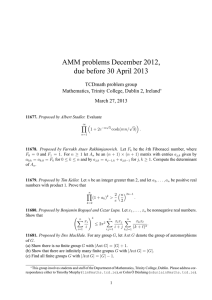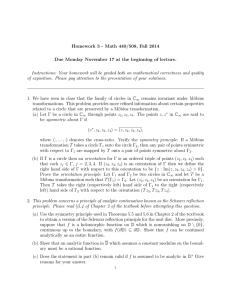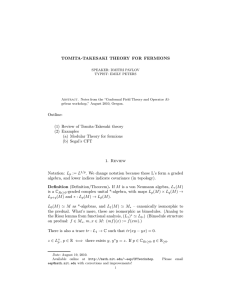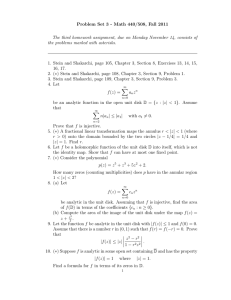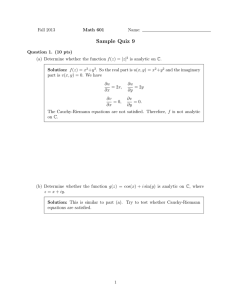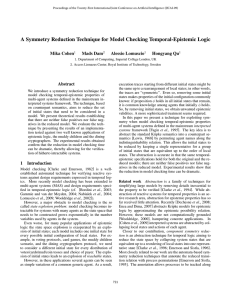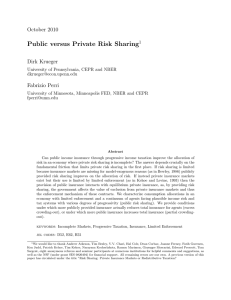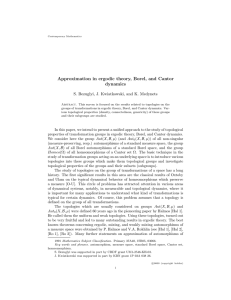Homework 3 - Math 440/508, Fall 2012
advertisement
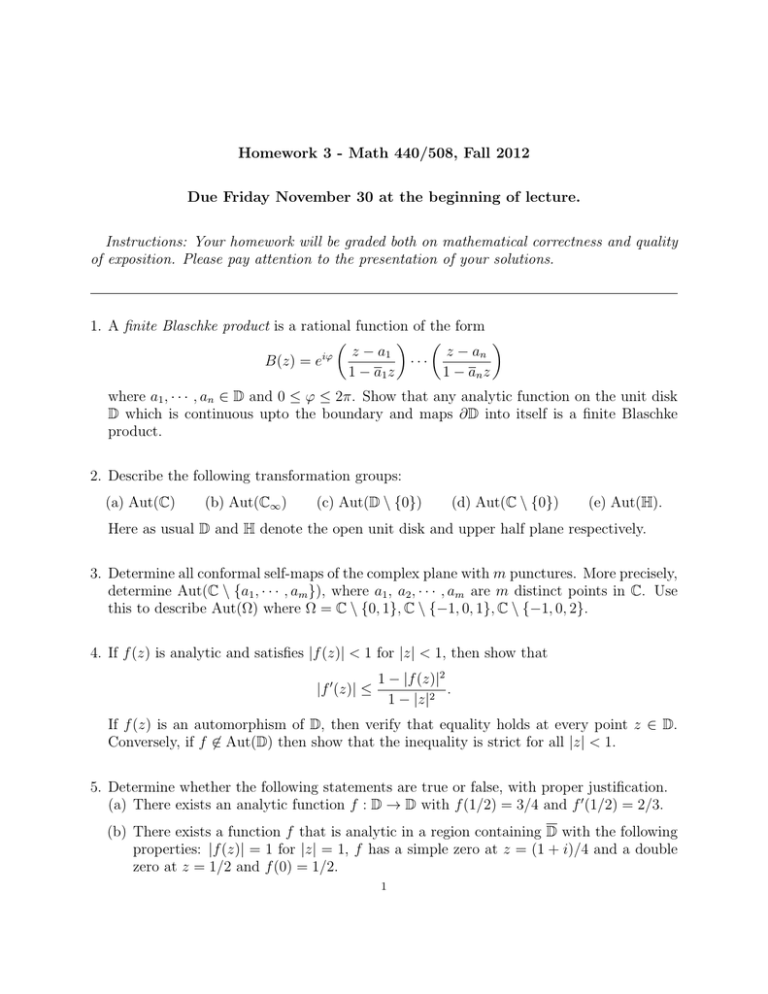
Homework 3 - Math 440/508, Fall 2012
Due Friday November 30 at the beginning of lecture.
Instructions: Your homework will be graded both on mathematical correctness and quality
of exposition. Please pay attention to the presentation of your solutions.
1. A finite Blaschke product is a rational function of the form
z − a1
z − an
iϕ
B(z) = e
···
1 − a1 z
1 − an z
where a1 , · · · , an ∈ D and 0 ≤ ϕ ≤ 2π. Show that any analytic function on the unit disk
D which is continuous upto the boundary and maps ∂D into itself is a finite Blaschke
product.
2. Describe the following transformation groups:
(a) Aut(C)
(b) Aut(C∞ )
(c) Aut(D \ {0})
(d) Aut(C \ {0})
(e) Aut(H).
Here as usual D and H denote the open unit disk and upper half plane respectively.
3. Determine all conformal self-maps of the complex plane with m punctures. More precisely,
determine Aut(C \ {a1 , · · · , am }), where a1 , a2 , · · · , am are m distinct points in C. Use
this to describe Aut(Ω) where Ω = C \ {0, 1}, C \ {−1, 0, 1}, C \ {−1, 0, 2}.
4. If f (z) is analytic and satisfies |f (z)| < 1 for |z| < 1, then show that
|f 0 (z)| ≤
1 − |f (z)|2
.
1 − |z|2
If f (z) is an automorphism of D, then verify that equality holds at every point z ∈ D.
Conversely, if f 6∈ Aut(D) then show that the inequality is strict for all |z| < 1.
5. Determine whether the following statements are true or false, with proper justification.
(a) There exists an analytic function f : D → D with f (1/2) = 3/4 and f 0 (1/2) = 2/3.
(b) There exists a function f that is analytic in a region containing D with the following
properties: |f (z)| = 1 for |z| = 1, f has a simple zero at z = (1 + i)/4 and a double
zero at z = 1/2 and f (0) = 1/2.
1
2
(c) There is a unique analytic function f : D → D such that f (0) = 1/2 and f 0 (0) = 3/4.
(d) There exists an analytic function that maps G = C \ [−1, 1] onto D.
6. Let Γ be a circle in C∞ containing z2 , z3 , z4 . Recall that z, z ∗ ∈ C∞ are symmetric with
respect to Γ if
(z ∗ , z2 , z3 , z4 ) = (z, z2 , z3 , z4 ).
(a) Show that the definition of symmetry is independent of the choice of points z2 , z3 , z4
in Γ.
(b) Prove the symmetry principle for Möbius transformations: If a Möbius transformation
T takes a circle Γ1 onto the circle Γ2 then any pair of points symmetric with respect
to Γ1 are mapped by T onto a pair of points symmetric with respect to Γ2 .
(c) If Γ is a circle then an orientation for Γ is an ordered triple of points (z2 , z3 , z4 ) in Γ.
If (z2 , z3 , z4 ) is an orientation of Γ then we define the right and left sides of Γ (with
respect to this orientation) to be
{z : Im(z, z2 , z3 , z4 ) > 0}
and
{z : Im(z, z2 , z3 , z4 ) < 0} respectively.
Prove the orientation principle: Let Γ1 and Γ2 be two circles in C∞ and let T be a
Möbius transformation such that T (Γ1 ) = Γ2 . Let (z2 , z3 , z4 ) be an orientation for Γ1 .
Then T takes the right (respectively left) side of Γ1 onto the right (respectively left)
side of Γ2 with respect to the orientation (T z2 , T z3 , T z4 ).
